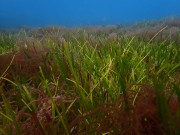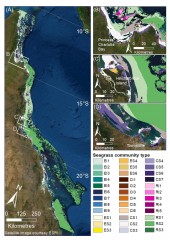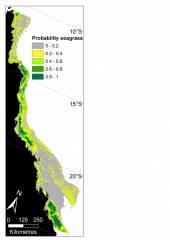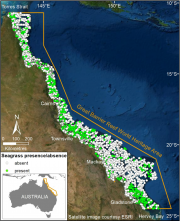NESP TWQ Round 5 - Project 5.4 – Deriving ecologically relevant targets to meet desired ecosystem condition for the Great Barrier Reef: a case study for seagrass meadows in the Burdekin region
This project derived Ecologically Relevant Targets (ERTs) for sediment loads for the Burdekin basin and provided the seagrass desired state across the Great Barrier Reef (GBR) by:
- defining seagrass desired state for the GBR
- calculating light requirements; and
- calculating ERTs for terrestrially sourced sediment loads, using Cleveland Bay as a case study.
Historical and new data collections were compiled and used to derive ERTs via statistical models and eReefs Relocatable Coastal Model (RECOM), and the seagrass submodel in eReefs was used to test ERTs.
Images
Datasets

This project derived Ecologically Relevant Targets (ERTs) for sediment loads for the Burdekin basin and provided the seagrass desired state across the Great Barrier Reef (GBR) by;
1. defining seagrass desired state for the GBR;
2. calculating light requirements; and
3. calculating ERTs for terrestrially sourced sediment loads, using Cleveland Bay as a case study.

This dataset describes the predicted distribution of seagrass communities across the Great Barrier Reef World Heritage Area and adjacent estuaries, based on six multivariate regressions tree models for estuary intertidal, estuary subtidal, coastal intertidal, coastal subtidal, reef intertidal, and reef subtidal. The models are presented as six raster datasets with 30m resolution.

This dataset describes the predicted probability of seagrass presence across the Great Barrier Reef World Heritage Area and adjacent estuaries, based on six Random Forest models. The models have been mosaicked together into one raster dataset with 30m resolution.

This dataset summarises 35 years of seagrass data collection (1984-2018) within the Great Barrier Reef World Heritage Area into one GIS shapefile containing seagrass presence and absence survey data for 81,387 sites.





